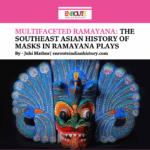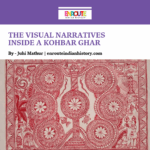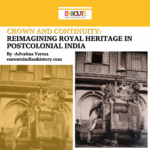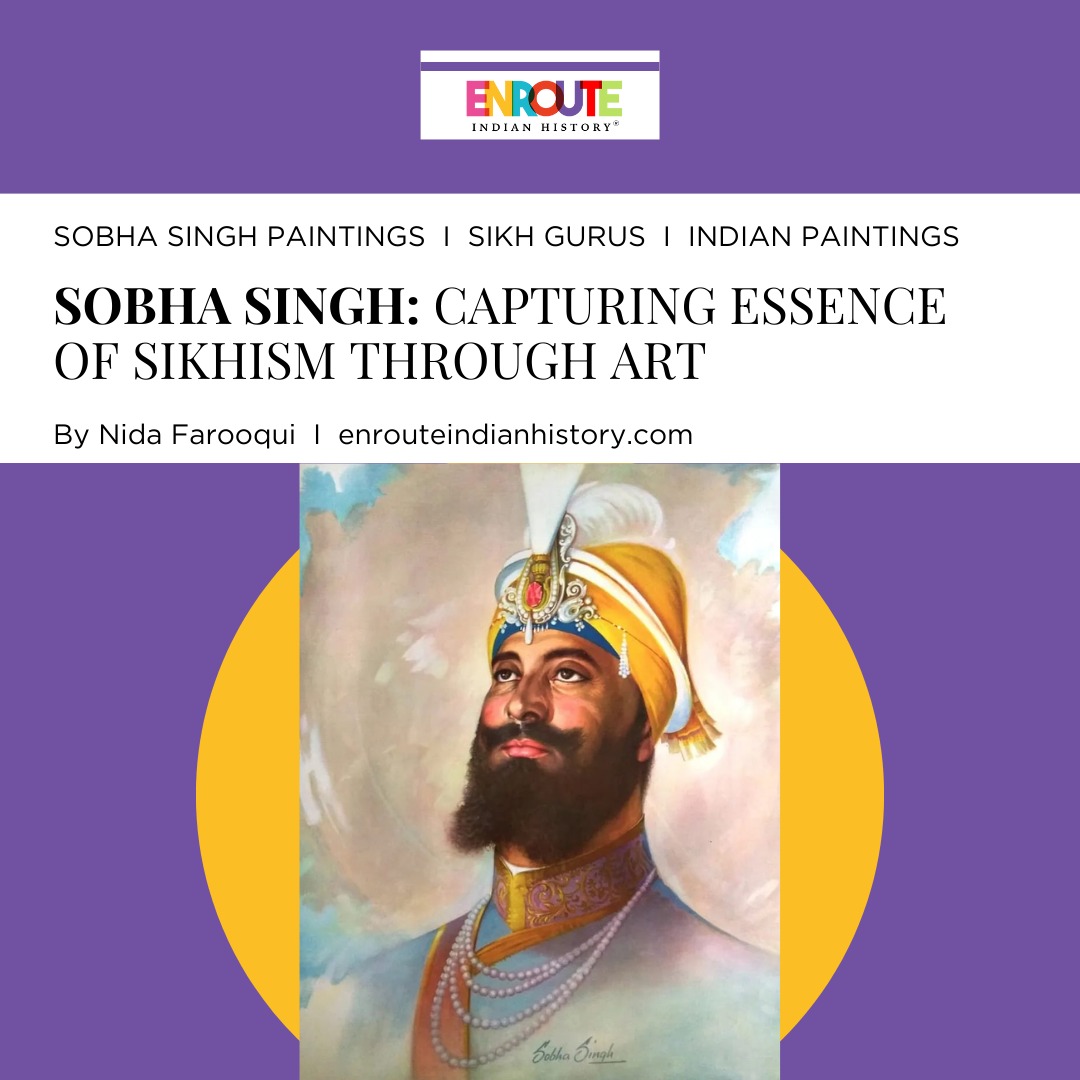
In the rich tapestry of Punjab’s artistic landscape, Sobha Singh emerges as a luminary, casting his vibrant strokes alongside a myriad of creative talents that have blossomed in this diverse region. Punjab, much like an eclectic masterpiece, has birthed a multitude of artists across various realms, each contributing a unique brushstroke to the canvas of cultural heritage.
Beyond its geographical bounds, Punjab stands as a living mosaic, a convergence of diverse cultures and traditions. Here, poets weave verses that echo through time, writers craft tales that enrapture the soul, and painters like Singh immortalize the essence of this vibrant heritage with vivid strokes on canvas.
Within this cultural kaleidoscope, Sobha Singh’s work finds resonance, adding another layer to the intricate narrative of Punjab’s creative legacy. The state, pulsating with life and diversity, is not merely a location on the map but a vibrant mosaic of traditions, stories, and artistic brilliance.
As we delve into the artistic journey of Sobha Singh, we explore the depths of Punjab’s diversity, recognizing how this land, rich in varied hues, fosters an environment where creativity flourishes boundlessly. It’s a celebration of the artistic heritage that Punjab, much like a seasoned maestro, orchestrates through the hearts and minds of those captivated by its cultural symphony.
In the realm of artistic brilliance, Sobha Singh stands as a luminary whose profound impact on portraying Sikh history cannot be overstated. His canvases tell tales of a rich heritage, breathing life into the narratives of the Sikh community with each masterful stroke of his brush. Singh’s art transcends the ordinary, transforming historical episodes into a living, visual testament of the spirit and essence of Sikhism. This article invites you to embark on a captivating journey through the lens of Sobha Singh’s creativity, delving into the unique narrative he crafted that resonates across borders. Discover the man behind the art, a storyteller who, through his exceptional talent, immortalized the soulful saga of Sikh history on canvas.
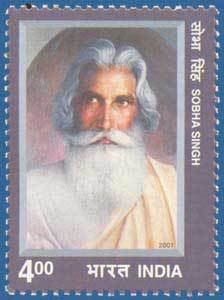
( Sobha Singh on a 2001 Stamp of India. Source – Government of India. )
Sobha Singh’s Formative Years: A Glimpse into the Early Chapters of an Artistic Journey
Born on November 29, 1901, in Sri Hargobindpur, District Gurdaspur, Punjab, Sobha Singh’s early life unfolded amidst the rustic charm of his native village. At the tender age of four, he faced the loss of his mother, Ichhran Devi, and it was in these formative years that his affinity for drawing and sculpting began to blossom.
Despite initial disapproval from his father, Deva Singh, who viewed artistic pursuits with skepticism, Sobha Singh’s childhood in the village became a canvas for his artistic exploration. His foray into the world of art continued when he enrolled in an industrial school in Amritsar in 1916, specializing in art and craft. In 1919, influenced by his father, he donned the uniform and served as a draftsman in the army, stationed in Baghdad.
Returning to India in 1923, Sobha Singh decided to make a livelihood through painting. In a twist of fate, he ventured into the realm of filmmaking in 1926, establishing a film company in Lahore and creating the film ‘But-Tarash.’
The shift to Delhi in 1931 marked a significant chapter in Sobha Singh’s life. Thriving in the bustling city, he found success in drawing posters for Indian Railways and the Post & Telegraph Department. Col. GD Tata, a patron of the arts, played a pivotal role in appreciating and encouraging Singh’s work during this period.
A notable episode unfolded in 1942 when Sobha Singh briefly resided in Preet Nagar, a colony of intellectuals founded by Gurbax Singh. Surrounded by renowned writers, artists, and educationists, Singh’s artistic journey found communal resonance.
The post-independence era witnessed Sobha Singh’s migration to Andretta, a tranquil village in the Kangra Valley, in 1947. Here, amidst the mountains, he built a modest dwelling, emphasizing the peace and serenity that the natural surroundings brought to his creative spirit. In the company of literary figures like Nanak Singh and Balwant Gargi, Singh’s artistic legacy continued to evolve against the backdrop of the scenic Himalayan landscape.
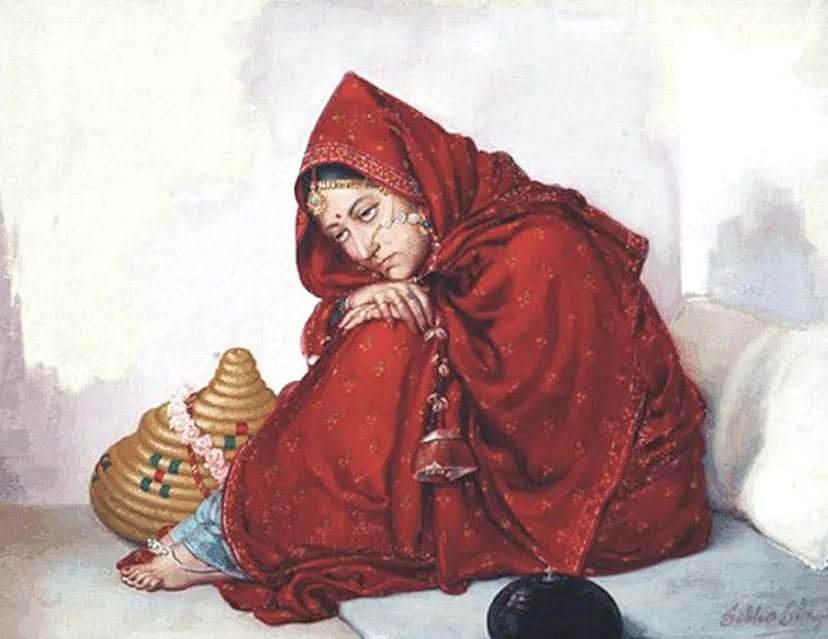
(Shy and innocent – Kangra Bride by Sobha Singh ; Source – Government Museum and Art Gallery, Chandigarh.)
Sohni Mahiwal: Sobha Singh’s Pinnacle in Artistry
Immersed in the romantic lore of Punjab, Sobha Singh brought to life the timeless tales on canvas. In 1929, he crafted the enchanting narrative of Sassi and Punnu, portraying Sassi as a captivating maiden lost in the sands, fervently searching for her lover forcibly taken away. Fast forward to 1944, and Singh unveiled his magnum opus, ‘Sohni Mahiwal,’ a masterpiece that eloquently captures the silent anguish shared between two youthful hearts. Through this poignant painting, Singh skillfully depicts the tender allure of feminine beauty, with Sohni’s lithe figure draped in a wet dupatta. Among his exceptional works, ‘Sohni Back to Heaven’ stands out as a testament to Singh’s artistic prowess, marking yet another chapter in his exploration of profound narratives. The enigma surrounding the models employed by Sobha Singh in creating iconic works like ‘Sohni-Mahiwal’ has long intrigued historians, according to Dr. Madanjit Kaur, a distinguished historian and former professor in the Department of Guru Nanak Studies at Guru Nanak Dev University, Amritsar. While Singh generally hesitated to use models, the scenario took a nuanced turn with ‘Sohni-Mahiwal.’ Between 1937 and 1980, Singh embarked on five renditions of this masterpiece, with the third iteration, crafted in 1952, gaining immense popularity and finding a place in Karan Singh’s personal collection.
This particular rendition, widely reproduced and distributed by Sobha Singh himself, became a hallmark of his artistic legacy. In a revealing conversation with Dr. Kulwant Singh documented in ‘Painter of the Divine,’ Sobha Singh disclosed, “To paint ‘Sohni-Mahiwal,’ I covered my limbs with a thin wet cloth and used the reflection from an electric heater to study the effect of water and light.” This insight into his artistic process unveils the meticulous and innovative techniques employed by Singh to capture the intricate nuances of his celebrated masterpiece.
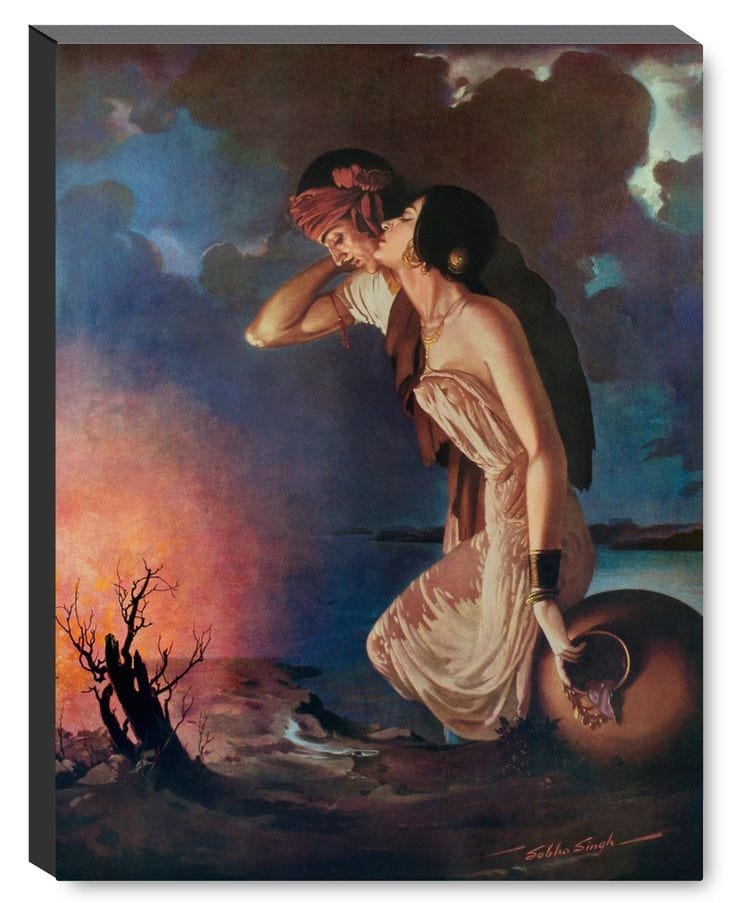
(Sohni Mahiwal by Sobha Singh; Source – Sobha Singh Art Gallery in Andretta, Kangra.)
Sobha Singh’s Artistic Renditions of Sikh Gurus
When contemplating 20th-century modern art in Punjab, Sobha Singh invariably stands out as one of the foremost figures. His depictions of the Sikh Gurus are so widely embraced that it’s a rarity to encounter a Sikh household without a print of his artworks.
Sobha Singh, known for his meticulous approach to realism in painting, exhibited a remarkable commitment to anatomical accuracy. His artworks were not mere representations but reflections of the true essence and personality of the subjects he chose to immortalize on canvas. In the initial phase of his artistic journey, Singh predominantly employed oil on canvas, a classic medium that allowed him to bring his visions to life with vibrant colors and rich textures.
However, the evolution of his artistic methods saw a transition to particle board, a shift that added a unique dimension to his creations. Singh’s discerning eye led him to experiment with different materials, ultimately finding that lumen paper fixed onto the hard board provided an ideal surface for his artistic expressions. This adaptation in materials not only showcased his versatility but also attested to his constant quest for perfection in portraying his subjects.
The hallmark of Sobha Singh’s works lies in the intricacy of treatment and the minuteness of detail. Each stroke of his brush, every nuance of shading, and the meticulous attention to the finer points in his compositions revealed a dedication to capturing the essence of his subjects with unparalleled precision. His paintings thus stand as testaments to a masterful blend of technical skill and artistic vision, where realism meets a profound appreciation for the subtle complexities of the human form and spirit.

( A Portrait of Guru Nanak by Sobha Singh, 1969 ; Smithsonian National Museum Exhibition : Sikh – Legacy of the Punjab.)
Sobha Singh’s favored themes revolved around the revered figures of Gurus, avatars, prophets, and saints, earning him the title of a “saint-artist.” Rooted in mysticism and driven by profound religious beliefs, he staunchly believed in the transformative power of the Gurus for humanity’s liberation. Particularly notable are his depictions of Guru Nanak, aptly named “Meditations on Guru Nanak,” which have garnered widespread acclaim for their distinctive embodiment of both spiritual and aesthetic values.
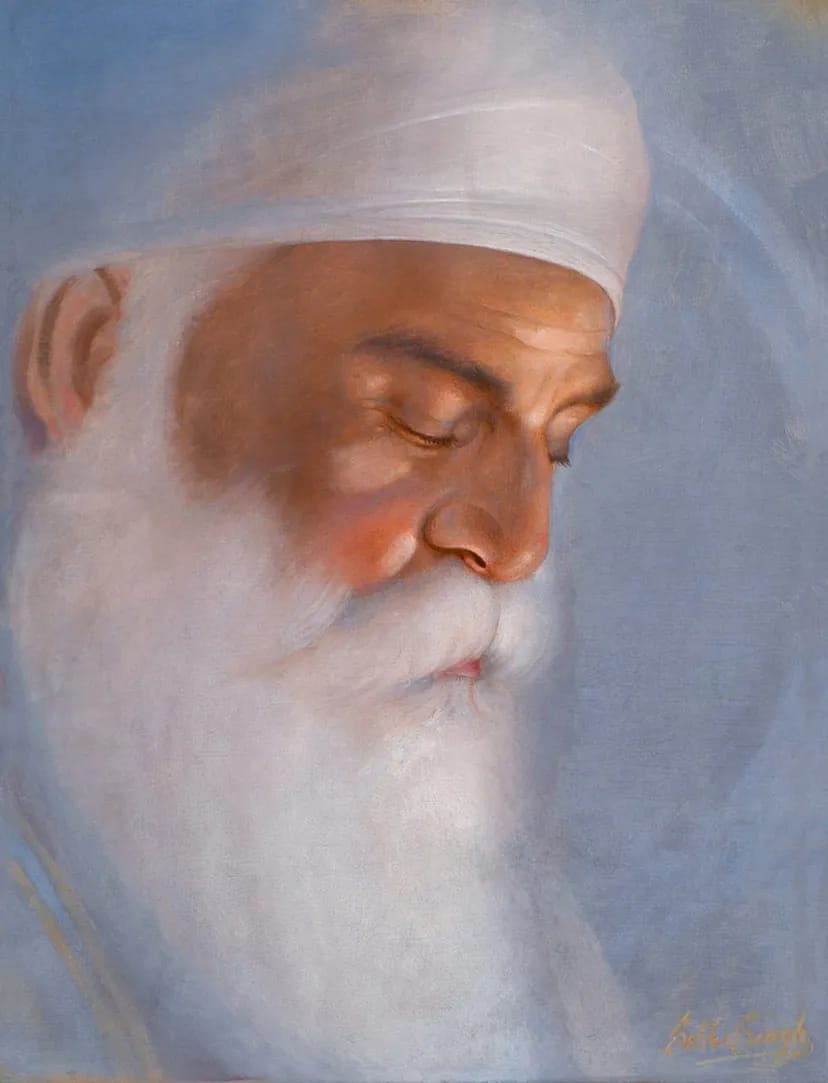
(Meditations on Guru Nanak by Sobha Singh ; Source – Government Museum and Art Gallery of Chandigarh.)
Sobha Singh’s portrayals of Guru Nanak have become revered artworks, gracing numerous museums, libraries, and Sikh households. Notably, he painted “Guru Har Krishan Healing the Sick” for the Bangla Sahib Gurdwara in Delhi. When depicting Guru Gobind Singh in his artworks, Singh endeavored to encapsulate the Guru’s unwavering determination, symbolizing a resolute defiance against tyranny.
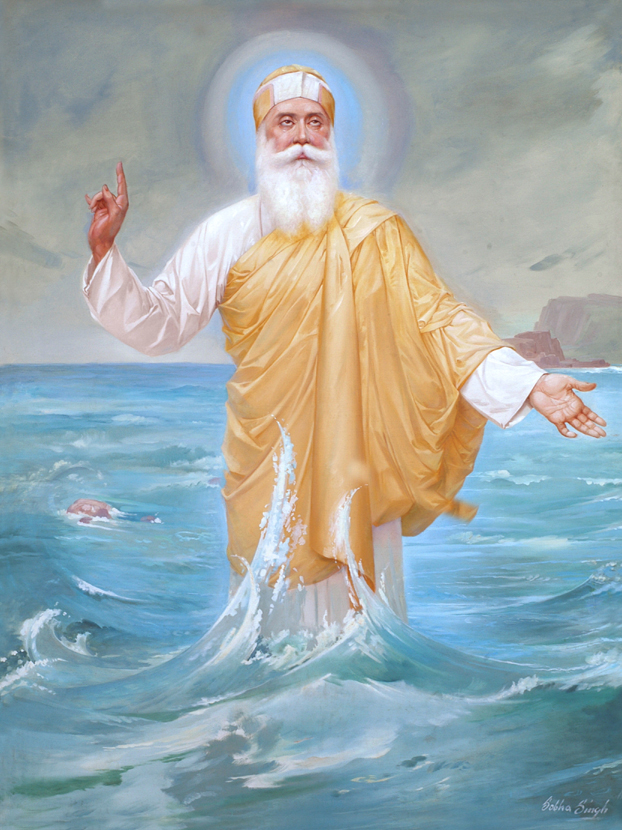
(Guru Gobind Singh by Sobha Singh ; Source – Government Museum and Art Gallery of Chandigarh.)
Situated in Andretta, his Art Gallery stands as a repository of Sobha Singh’s masterpieces. Adorning the walls of the gallery are portraits of Sikh Gurus, Christ, Krishna, and Sheikh Farid, creating a captivating tapestry of diverse subjects.
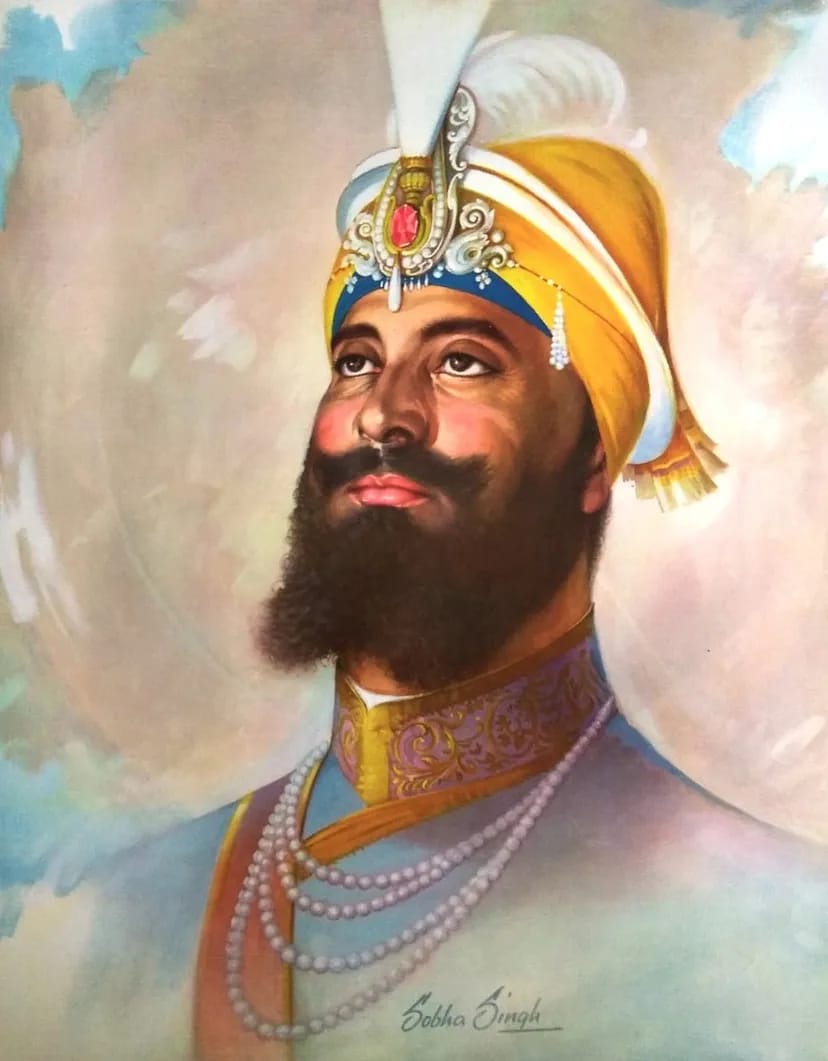
( A Portrait of Shiekh Farid by Sobha Singh ; Source – Medium.)
Sobha Singh was the recipient of numerous accolades throughout his illustrious career. In 1970, Punjabi University, Patiala, bestowed upon him a Fellowship. A documentary was produced by the Ministry of Information & Broadcasting of the Union Government in 1973 to highlight his contributions. The year 1974 saw him declared as the State Artist by the Punjab Government, accompanied by an honor from Guru Nanak Dev University, Amritsar. In recognition of his exceptional contributions to the arts, the Punjab Arts Council conferred upon him its highest award in 1982. The Government of India honored him with the Padma Shree, the fourth-highest civilian award, in 1983.
In the annals of Punjabi art, Sobha Singh emerges as a luminary whose brushstrokes transcended mere canvases, etching profound narratives that resonate through time. His early life in the rustic charm of Punjab laid the foundation for an artistic journey that would define 20th-century modern art in the region. Sobha Singh’s versatility shone through, from his meticulous realism to the spiritual depth encapsulated in his portrayals of Sikh Gurus, avatars, and saints.
His masterpiece, “Sohni Mahiwal,” became a symbol of his artistic pinnacle, reflecting a unique blend of technical skill and emotional depth. Singh’s subjects, spanning diverse cultures and beliefs, adorned the walls of his Andretta Art Gallery, creating a treasury of visual stories. His legacy extends beyond the canvas, manifesting in numerous awards and honors that acknowledge his indelible contribution to the world of art.
From the fellowship conferred by Punjabi University to the prestigious Padma Shree, Sobha Singh’s journey was punctuated by recognition, culminating in a rich tapestry of awards that mirrored the widespread acclaim for his artistic prowess. As we reflect upon the life and works of Sobha Singh, we unveil not just an artist but a storyteller, a saint-artist whose paintings transcend the visual to embrace the spiritual, leaving an enduring legacy that continues to captivate hearts and minds alike. In the strokes of Sobha Singh, Punjab found its artistic maestro, a visionary whose canvases remain portals to the cultural, spiritual, and aesthetic richness of the land he so passionately depicted.
References
- Bahga, Sarbjit. “Remembering Sobha Singh: A Saint Painter | by Sarbjit Bahga | Medium.” Sarbjit Bahga, 22 November 2021, https://bahga-sarbjit.medium.com/remembering-sobha-singh-a-saint-painter-abd4d6de0e12. Accessed 13 January 2024.
- “Meet Sobha Singh, the model behind iconic ‘Sohni-Mahiwal.’” Tribune India, 29 November 2017, https://www.tribuneindia.com/news/archive/punjab/meet-sobha-singh-the-model-behind-iconic-sohni-mahiwal-505249. Accessed 13 January 2024.
- Singh, Sobha. “#MuseumJigsaw: Sohni-Mahiwal by Sobha Singh.” The Heritage Lab, 25 March 2020, https://www.theheritagelab.in/museumjigsaw-sohni-mahiwal-by-sobha-singh/. Accessed 13 January 2024.
“Sobha Singh – Painter of The Portraits of The Sikh Gurus.” DAG, https://dagworld.com/sobhasingh.html. Accessed 13 January 2024


